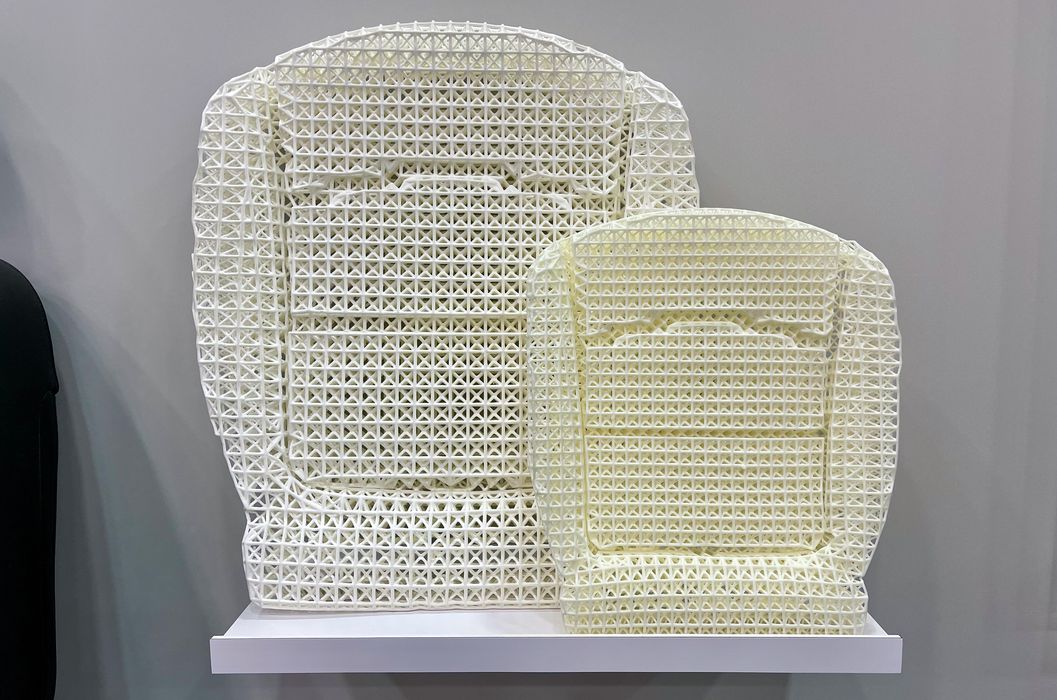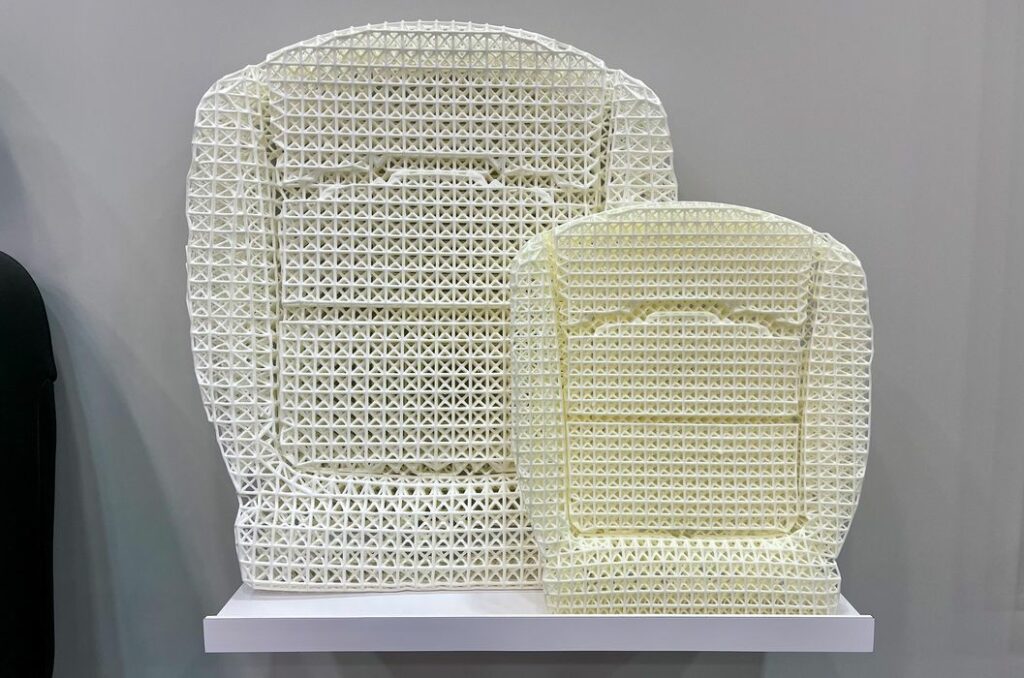
Desktop Metal’s technology innovations continue with the introduction of a very unusual 3D print material: FreeFoam.
The material is intended for use in the company’s ETEC equipment, which is the new brand from their recent acquisition of EnvisionTEC. It’s a resin material that’s printed with the ETEC DLP process, but requires a bit of post processing, as you will see.
FreeFoam is actually a family of resins that all have the same unusual characteristic: they “inflate” into a true foam with a post-printing heat treatment. While we’ve seen only one FreeFoam material so far, it’s likely they have additional versions in development.
The idea is to use FreeFoam to create complex foam objects that could not easily be made using other processes. A typical application could be the foam portion of an automobile seat, as shown at top.
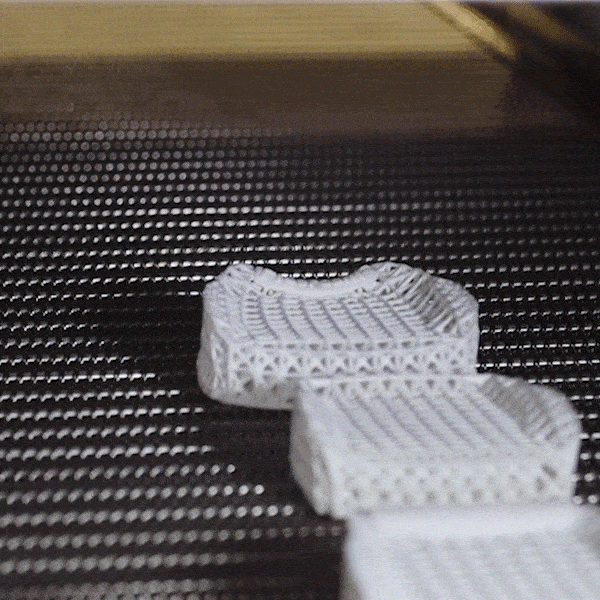
What’s really interesting is the expansion factor. Desktop Metal said it is possible to control the expansion, likely through post printing thermal control, for “specific amounts” of expansion. These can range between two and seven times the original print dimensions.
There’s an interesting side benefit of this: it means you can produce foam objects far larger than the 3D printer’s build volume. For a build volume of 200mm, this could mean you can print a foam object up to 1400mm in length. That size captures a great deal of the seating market, doesn’t it?
I can’t imagine how challenging it would be to create such complex shapes using conventional manufacturing processes. In most cases the foam object would simply be solid, and the softness would be controlled by the chemistry of the material, rather than its structure as is done with FreeFoam.
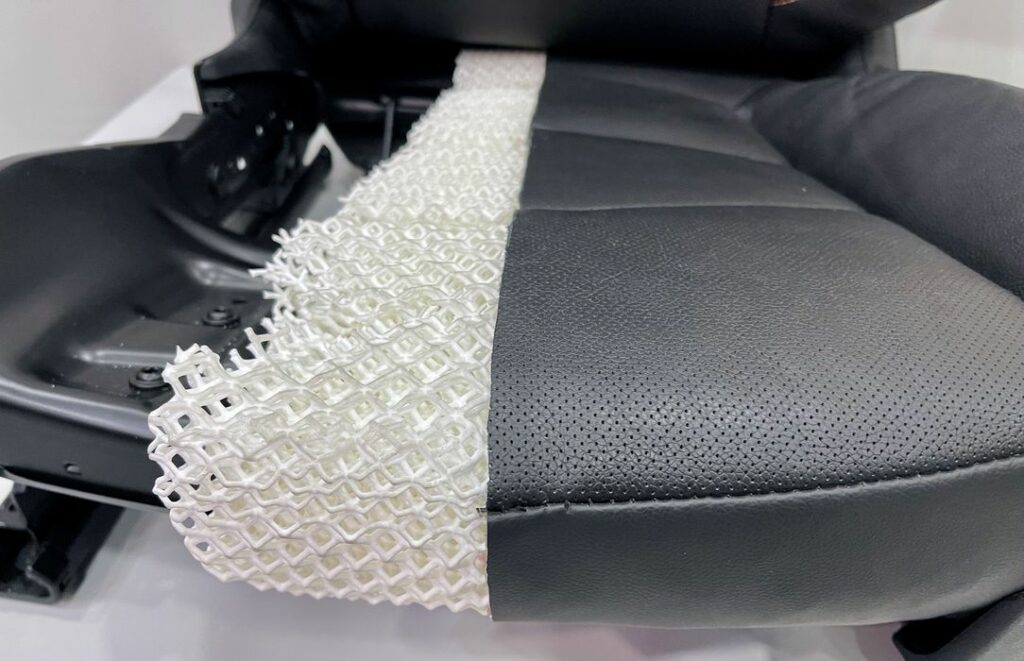
FreeFoam could allow designers to create foam objects with far less material that perform the same function as solid foam objects. They could be far less weight as well, which is a benefit to several industries, including automotive and aerospace.
The ETEC equipment is already pretty fast at printing due to their unusual continuous 3D printing process. This means that you could produce quite a volume of foam products using this device and material.
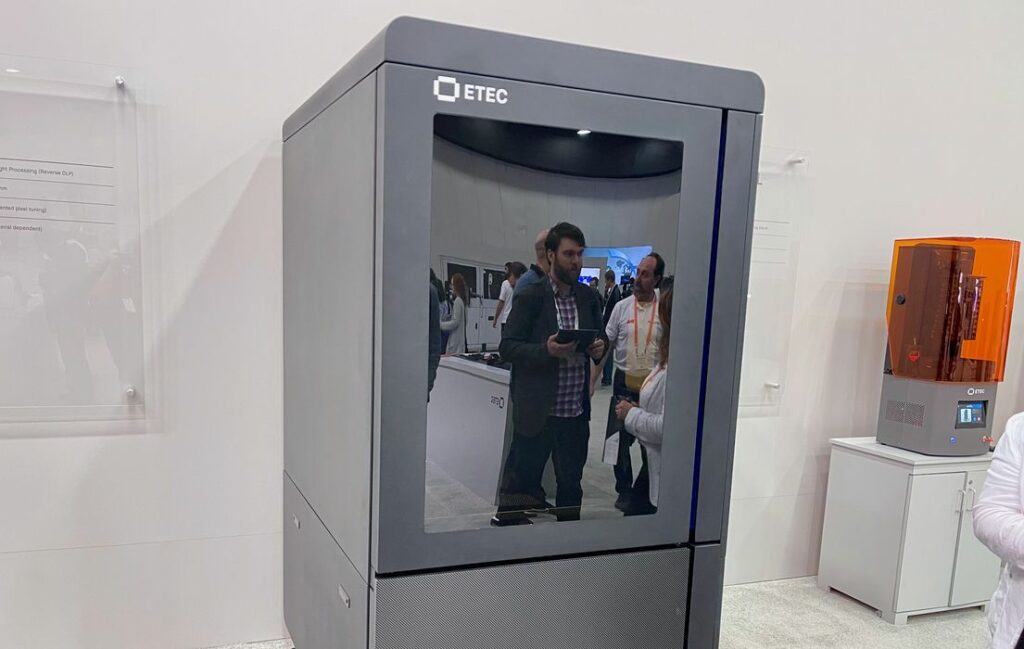
The target ETEC device for the FreeFoam material is the new Xtreme 8K device, the largest in the ETEC portfolio at the moment. The machine is positioned as a “production-grade DLP 3D printer” that is intended for volume production of parts.
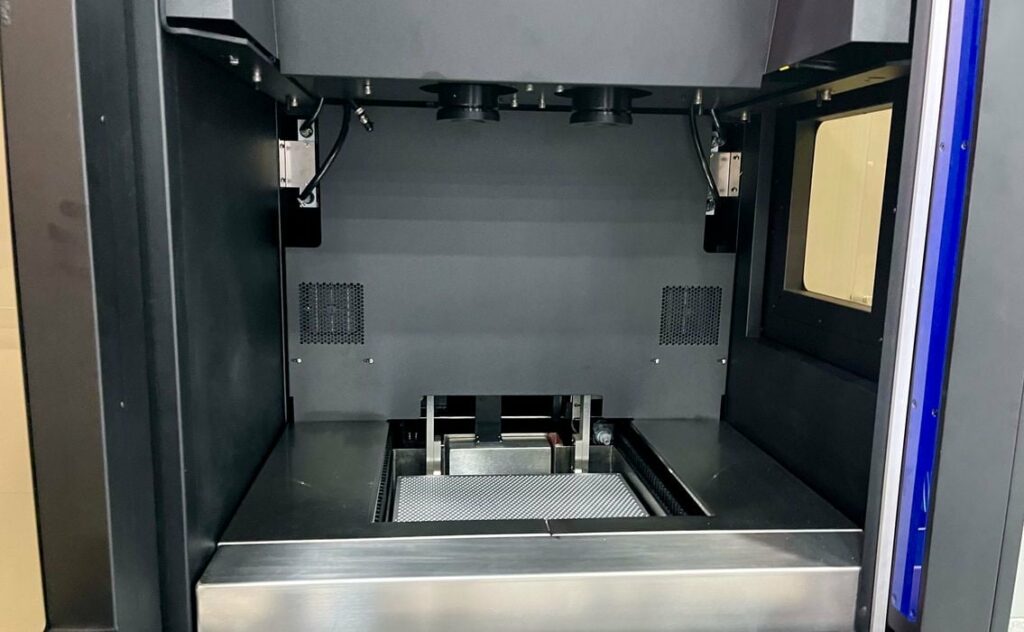
A Desktop Metal representative explained that the ETEC gear could produce 8-10 foam seat parts overnight, which is not too bad. With a small farm of ETEC equipment it would be possible to produce small volumes of components for end use.
My only question about FreeFoam is in the designs that would make use of it. Since the material is so utterly different than traditional foams, how will seat designers imagine new concepts using the FreeFoam material? Does software exist that can fully leverage this material? CAD tools would have to understand the expansion factors in order to match the print to the intended application volume, for example. I suspect Desktop Metal has or is working on such software tools.
Via Desktop Metal

